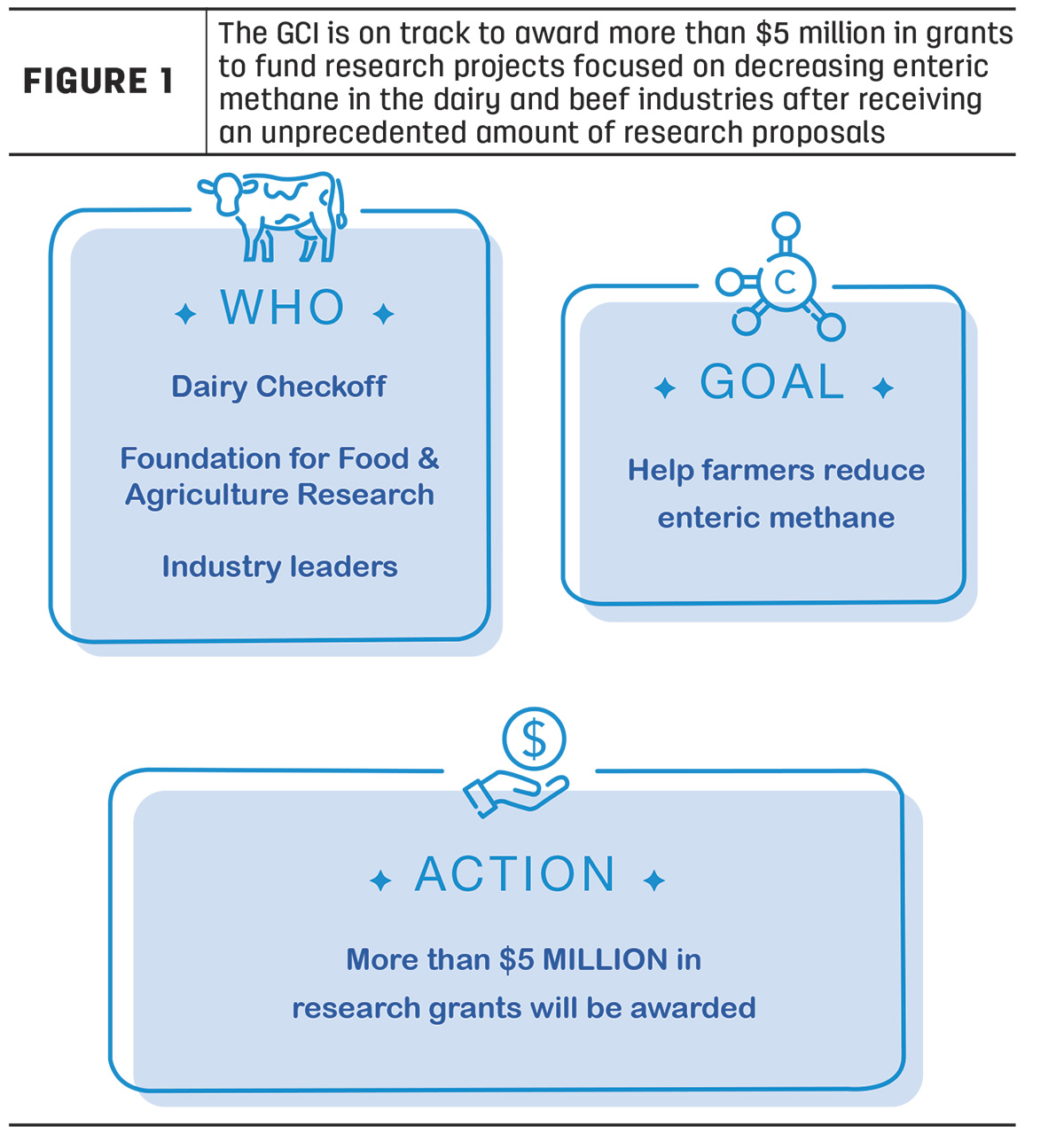The Greener Cattle Initiative (GCI) is exceeding expectations on its goal of funding research to discover solutions for the biggest contributor of on-farm emissions in the U.S.: enteric methane.
The GCI is on track to award more than $5 million in grants to fund research projects focused on decreasing enteric methane in the dairy and beef industries after receiving an unprecedented amount of research proposals (Figure 1).

This is beyond what we had hoped for when the GCI was launched as a joint creation by the checkoff-founded Innovation Center for U.S. Dairy and the Foundation for Food & Agriculture Research (FFAR).
The good news is the initiative has caught momentum, including participation from highly recognizable organizations in the food and agriculture industry, commodity groups and non-profits. GCI partners include ADM, the Council on Dairy Cattle Breeding, Elanco, Genus plc, the National Dairy Herd Information Association, Nestlé, JBS USA and the New Zealand Agricultural Greenhouse Gas Research Centre.
These organizations are extending the reach of farmers’ checkoff dollars and helping to accelerate progress to mitigate enteric methane emissions, which has been a major focus of farmer-led voluntary efforts by the U.S. dairy sector to meet environmental stewardship goals announced by the Innovation Center for U.S. Dairy.
The GCI’s commitment and vision takes on even greater significance when considering that federal funding toward research-based solutions that can help dairy farmers reduce the impact of enteric methane is minimal. In fact, less than 2% of funding from federal research and development agencies aimed at agricultural climate mitigation is directed specifically for enteric methane reduction projects.
The GCI will support collaborative research on enteric methane mitigation from ruminants in five key research areas: dairy cow nutrition, rumen microbiome, dairy cow genetics, sensing and data technology, and socioeconomic analysis. And we are placing the farmer perspective front and center on our work. Our member organizations represent dairy farmers’ voices and priorities, as well as input from animal health, genetic, feed and nutrition research organizations and companies.
It was rewarding to spotlight GCI on the global stage last fall in the Agriculture Innovation Mission for Climate (AIM for Climate) Roadshow at the 27th annual UN Climate Change Conference of the Parties (COP27).
FFAR Executive Director Dr. Saharah Moon Chapotin moderated a panel discussion that I had the privilege to share with Jessica Langley from JBS and Dr. Lucas Huntimer from Elanco.
Huntimer spoke about his company’s goal of finding ways to reduce methane emissions while producing more protein to feed a growing population amid escalating food prices.
“Some of the impetus of us joining the [GCI] was we really viewed this as a key stakeholder event to bring all the different parts of cattle production together and be able to learn [about] and invest into new technologies and solutions throughout the entire chain,” he said.
The entire presentation can be heard here.
The GCI has only been around for a little more than a year, but the response we obtained shows how powerful the dairy value chain can be when we commit to collaborate pre-competitively and rally for the greater good of our industry.
It also illustrates how the checkoff is making the case for dairy sustainability and is benefitting our hardworking farmers, who are poised to take their generations-long commitment of caring for the Earth and natural resources to new levels of environmental stewardship.
To learn more about your national dairy checkoff, visit our website, or to reach us directly, send an email. For more information about GCI, click here.





